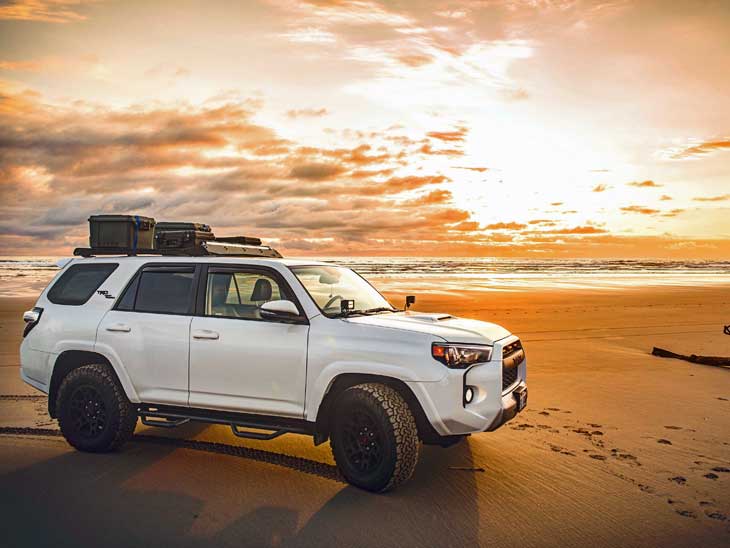
Prepping Your Jeep for Beach Camping
Jeeps were made for the beach. You can feel the wind blowing through your hair as you cruise through the sand and explore beaches all over the country. Yet, driving on the beach is much different than tackling other off-road environments. To maximize your fun in the sun, it’s important to prep your off-road jeep for beach camping if you plan on taking it through the sand. Learn more about how to best prepare for your next beach adventure.
Jeep Lift Kits
If you’re gearing up to go off-roading for the first time, be sure to equip your Jeep with the right tires, such as all-terrain or mud-terrain tires that are designed for churning through deep pockets of sand. These tires feature reinforced sidewalls for more stability in the dunes, unique tread patterns for more traction, and puncture-resistance in case you drive over broken glass, sticks, rocks, and other sharp objects at the beach. Your factory tires will likely cut through the sand like butter, especially on a hot summer day.
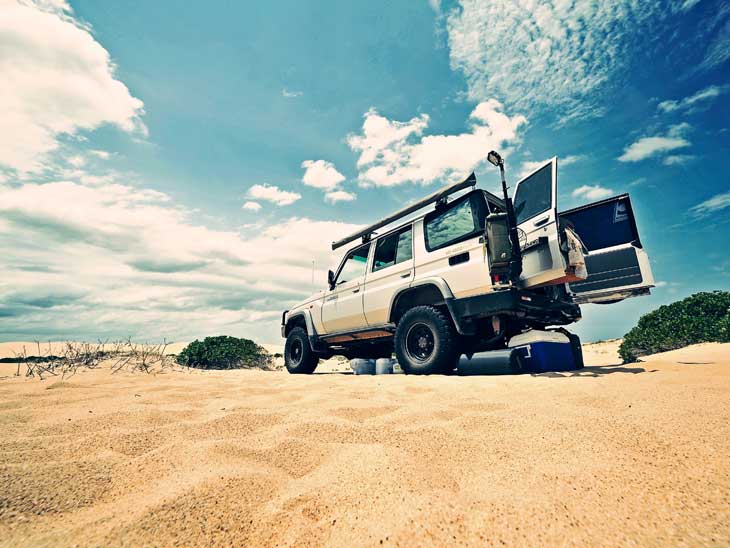 Off-road tires tend to be larger than your factory tires, so it’s best to purchase a lift kit for your Jeep. When you buy Jeep lift kits, you’ll have everything you need to install the kit, including coil springs, upgraded shocks, and control arms for better handling and a smoother ride. A lift kit will also give you more ground clearance, so you can pass over obstacles with ease.
Off-road tires tend to be larger than your factory tires, so it’s best to purchase a lift kit for your Jeep. When you buy Jeep lift kits, you’ll have everything you need to install the kit, including coil springs, upgraded shocks, and control arms for better handling and a smoother ride. A lift kit will also give you more ground clearance, so you can pass over obstacles with ease.
Fender Flares
It’s also a good idea to invest in Jeep fender flares. When you lift the suspension of your Jeep, some larger tires may require different fender flares for clearance purposes. Wide Jeep fender flares also protect your vehicle and passengers from all the sand that’s bound to fly through the air as you cruise to and from your campsite.
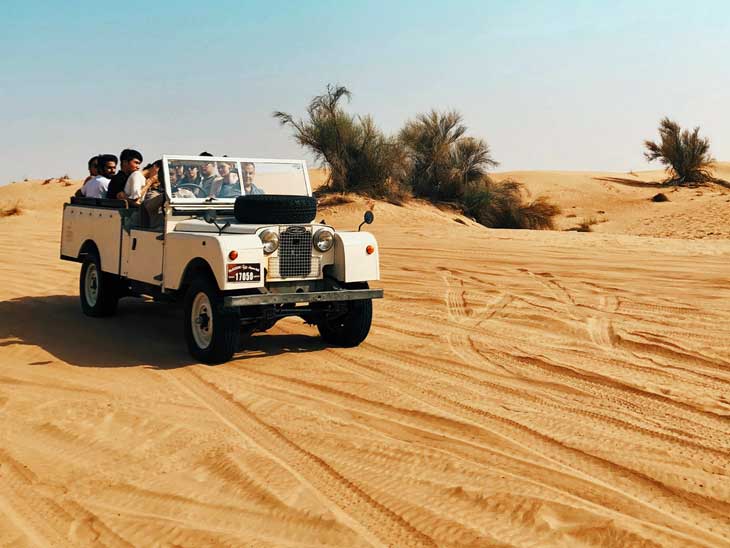
Lower Tire Pressure
Before you leave the road behind and head out through the sand, you may want to lower the air pressure in your tires to give them more flotation in the sand. Use tire valve bleeders to slowly lower the tire pressure to around 30 psi. Dip down even further to 20 psi or even 10 psi for softer sand. Use a tire gauge to confirm the results. It’s best to do this as close to the beach as possible, so your tires aren’t underinflated on the highway.
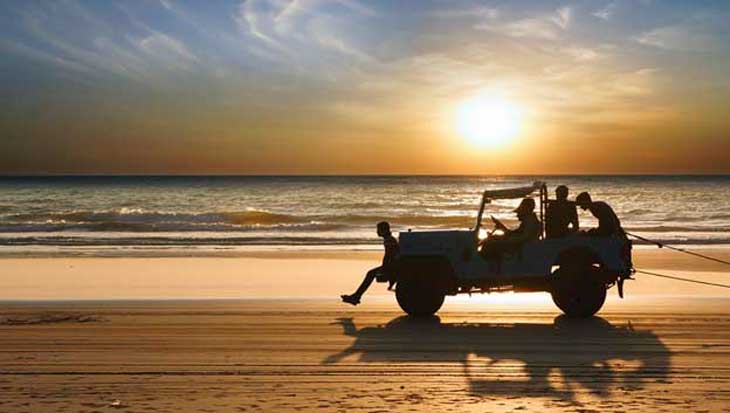
Inspect Your Drive Shaft and Steering Components
Spend a few moments inspecting your Jeep’s drive shaft and steering components to make sure they’re in tip-top shape. Sand tends to do a number on these components, so address any issues before heading out on your trip. If you plan on spending days or weeks at the beach, it’s not a bad idea to give your Jeep a tune-up beforehand just to be safe.
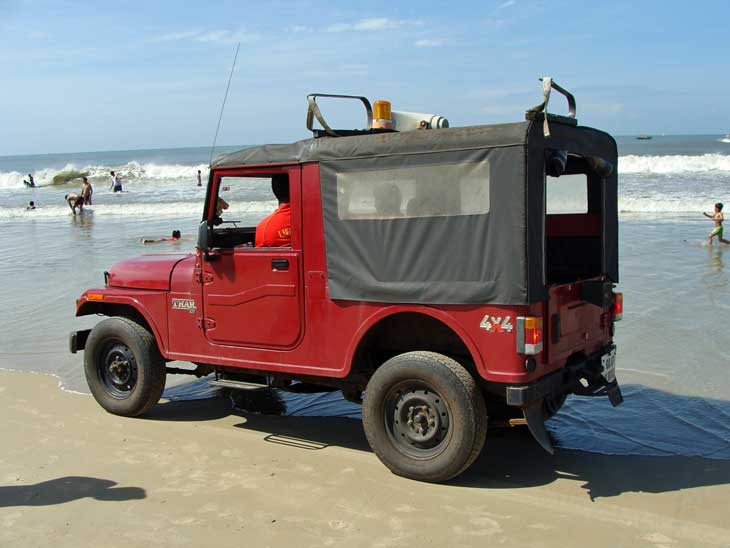
Bring Along Recovery Gear
There’s always the slim chance your Jeep could get stuck if you drive through particularly soft patches of sand at the beach. If this happens, getting out of the sand is much easier if you have the right gear. You can use a winch to pull yourself out or traction mats or pads to give your tires something to latch onto as you step on the gas, but, if that doesn’t work, bring along some recovery gear for more peace of mind. You can use a shovel to simply dig out your tires. This method may work just fine, but loose sand will quickly fall back into place around your tires.
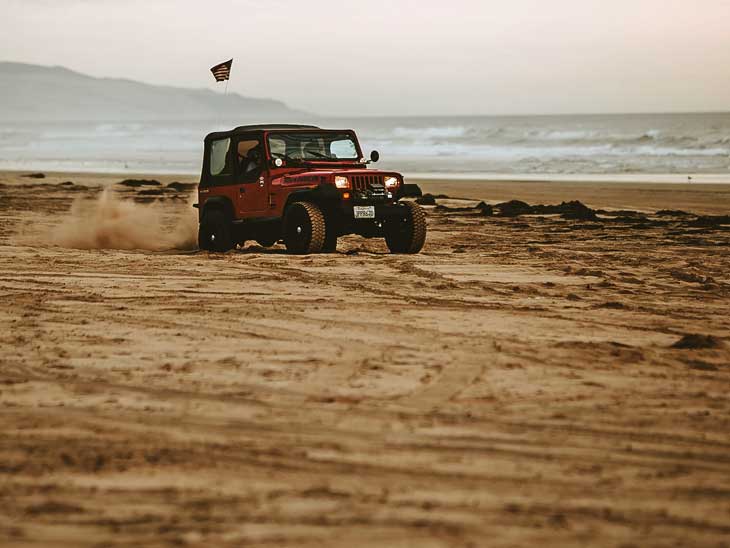 You can also use recovery straps when in a pinch. If you see another vehicle, wave them down and use recovery straps to have them pull your vehicle out of the sand. You can use elastic recovery straps that build momentum as the vehicle pulls on your Jeep. These tend to be lightweight and relatively inexpensive, perfect for beach camping. You can also use chains or tow-recovery straps.
You can also use recovery straps when in a pinch. If you see another vehicle, wave them down and use recovery straps to have them pull your vehicle out of the sand. You can use elastic recovery straps that build momentum as the vehicle pulls on your Jeep. These tend to be lightweight and relatively inexpensive, perfect for beach camping. You can also use chains or tow-recovery straps.
Regardless of which you choose, attach each end of the strap to an anchoring point on each vehicle, such as D-rings, the bumper, or tow hooks. Have the other vehicle slowly accelerate until your Jeep moves out of the sand. Make sure everyone stands back in case one of the straps comes loose.
Adjust Your Driving Habits
You’ll need to rethink your driving habits before cruising through the sand. You might feel like the king of the world as you power your way through the dunes, but driving over sand is different than the backwoods. Adjusting your driving habits will benefit the overall ride and trip through the sand. You should also reduce your speed and drive at a steady pace to reach that perfect camping place.
 Make sure you have a clear exit path before heading home. The beach may change after a few days or hours, so be on the lookout for large pockets of loose sand.
Make sure you have a clear exit path before heading home. The beach may change after a few days or hours, so be on the lookout for large pockets of loose sand.
Enjoy the Beach the Way You’ve Always Dreamed Of
Going camping at the beach in a Jeep is one of life’s greatest pleasures. That’s probably why you bought a Jeep in the first place. If you’re new to driving in sand, bring along recovery gear, lower your tire pressure, and adjust your driving habits accordingly. Keep this information in mind to make the most of your off-road adventure.
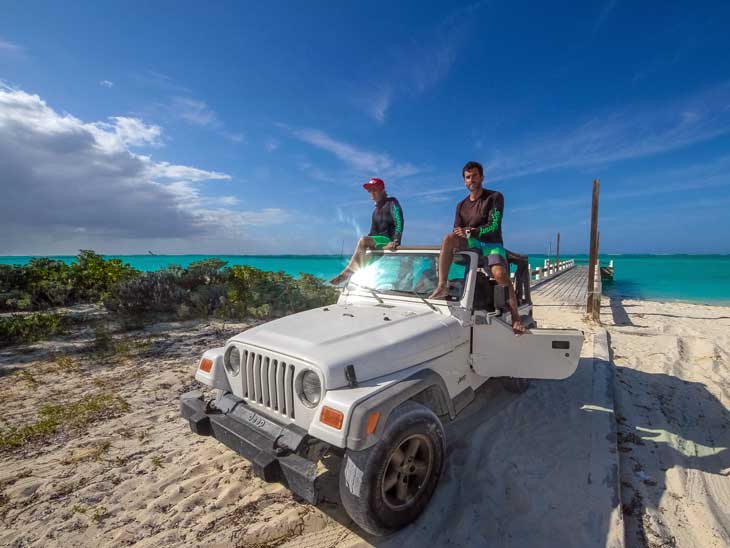 What is your best tip for taking your jeep to the beach? Please share in the comments below, on Twitter, Facebook or Instagram.
What is your best tip for taking your jeep to the beach? Please share in the comments below, on Twitter, Facebook or Instagram.
